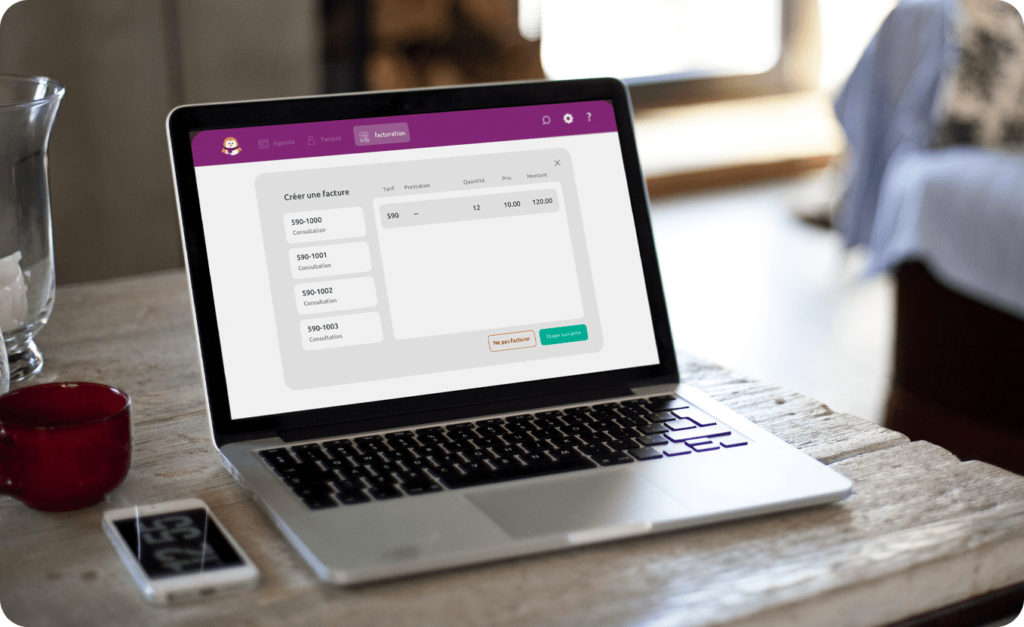Therapists
FAQ Tarif 590 – What Therapists Need to Know About Billing
Published on 28/03/2025

Tarif 590 is the billing framework for complementary and alternative medical services in Switzerland. It is essential for many therapists to bill their services correctly and be reimbursed by health insurers. Yet it often raises questions – from who it applies to, to how to issue a correct invoice. In this article, we answer the most frequently asked questions about Tarif 590 – clearly, concisely, and practically.
1. Who is Tarif 590 for?
Tarif 590 applies to all recognized therapists in the complementary or alternative medicine field who bill their services through the supplementary insurance of Swiss health insurers. The therapist must hold a ZSR number and be recognized by the insurers.
2. What exactly is Tarif 590?
Tarif 590 is a standardized billing model for complementary medical services in Switzerland. It defines which services can be billed under which conditions and includes a list of tariff codes with descriptions, durations, and unit prices.
3. How is Tarif 590 structured?
Tarif 590 consists of so-called tariff codes assigned to specific therapeutic services. Each code describes the service, the time duration, and billing conditions. There are also position numbers for materials or administrative tasks.
4. What services can be billed under Tarif 590?
Services from recognized complementary medical methods such as massage, acupuncture, TCM, homeopathy, or nutritional counseling. The method must be recognized by the health insurer and correctly mapped in the tariff.
5. Can missed or no-show appointments be billed?
Generally not through the insurer. Such fees can only be billed directly to the patient and must be communicated transparently.
6. How often is Tarif 590 updated?
The tariff is typically updated once a year, usually at the beginning of the year. Changes are communicated by the tariff association.
7. Where can I find the current version of Tarif 590?
You can download the current PDF version of Tarif 590 on the website of the Organization of the World of Work for Complementary Therapy (OdA KT). We also publish updates here on our blog.
8. Are updates to Tarif 590 automatically integrated into billing software?
That depends on the software provider. Many programs update the tariff automatically, but it’s recommended to check regularly whether the current version is stored. OneDoc’s Tarif 590 billing module updates automatically.
9. How can I issue a correct invoice under Tarif 590?
The best way is to use software or a template that supports Tarif 590. It’s essential that the invoice contains all mandatory details (see next question) and correctly lists the service period and matching tariff code.
10. What information must an invoice under Tarif 590 include?
Mandatory details include: practice name and address, ZSR number, patient name, date of birth, service date, tariff code, service description, duration, cost, place, date, and therapist’s signature.
11. Can I send the invoice directly to the health insurance?
No. Typically, patients receive the invoice and submit it to their supplementary insurer. This is called the “Tiergarant” system.
12. Does the invoice need to be signed by the therapist?
Yes. A handwritten or electronic signature of the treating therapist is required.
13. How long do I have to issue an invoice after a treatment?
It is recommended to issue invoices promptly after treatment. Although there is no official legal deadline in Tarif 590, some insurers may reject late invoices.
14. Can I bill multiple sessions in one collective invoice?
Yes, this is allowed and often preferred by patients and insurers to reduce administrative effort.
15. Are there tariff codes for administrative tasks or medical reports?
Yes, tariff codes exist for certain administrative services such as medical reports or material costs. These are listed in the tariff catalog.
16. Is it permitted to send invoices by email?
Yes, as long as the transmission complies with data protection laws. This means encrypted or password-protected. Many therapists use specialized software solutions for this.
17. What common mistakes should be avoided when billing under Tarif 590?
Typical mistakes include: incorrect tariff codes, missing mandatory information, incomplete patient data, or double billing. Using templates or billing software helps reduce such errors.
18. Can patients request an invoice for a specific period?
Yes, and they must be provided with one upon request – for example, for tax declarations or to track healthcare costs.
19. Do all health insurers cover services billed under Tarif 590?
No. Each supplementary insurance decides independently which methods and therapists are recognized. Patients should check with their insurer in advance.
20. What is the difference between TARMED and Tarif 590?
TARMED is used for medical services under the basic insurance (LaMal), while Tarif 590 applies to complementary medical services billed through supplementary insurance.
21. How do I know if I’m recognized to bill under Tarif 590?
You can find out from your registration body (e.g. EMR, ASCA) or directly from the health insurers you wish to work with.
22. How do I correct an invoice that has already been sent?
You can issue a corrected invoice labeled “Correction” and either cancel or mark the original invoice as invalid.
23. What if a health insurer rejects or does not accept an invoice?
Clarify the reason for rejection. It could be missing information or a non-recognized method. A follow-up with the insurer or a note to the patient may help.
24. Do I need a ZSR number to bill under Tarif 590?
Yes. The ZSR number (Zahlstellenregister) is required to bill services under Tarif 590. It identifies you to the health insurers.
25. How can I integrate Tarif 590 into my practice management or billing tool?
Many programs already offer Tarif 590 integration. OneDoc offers a module for billing under Tarif 590 along with many other functions such as online appointment booking and video consultations. Our solution integrates seamlessly with most standard practice software.




